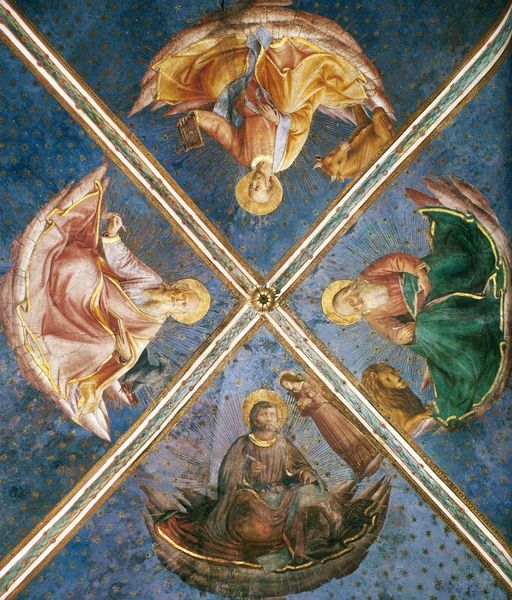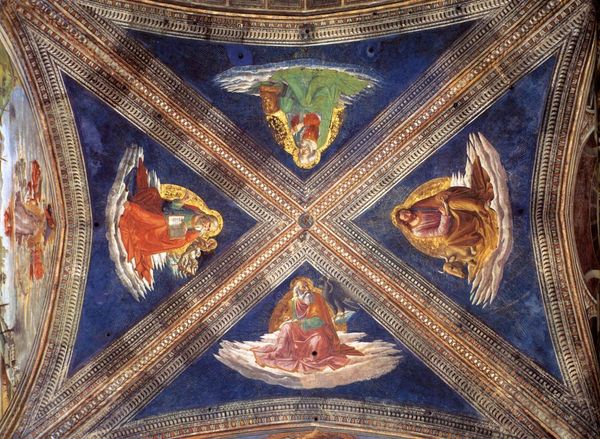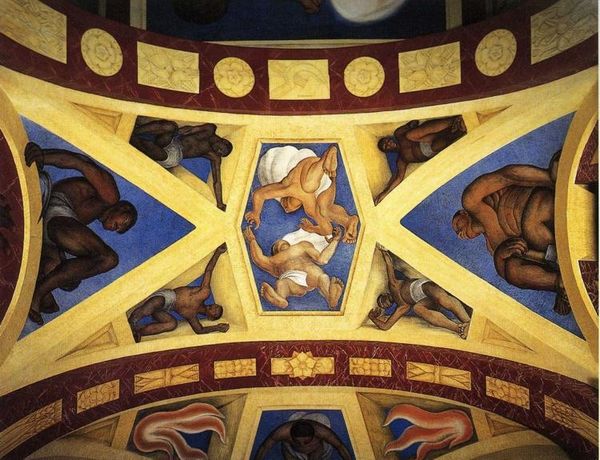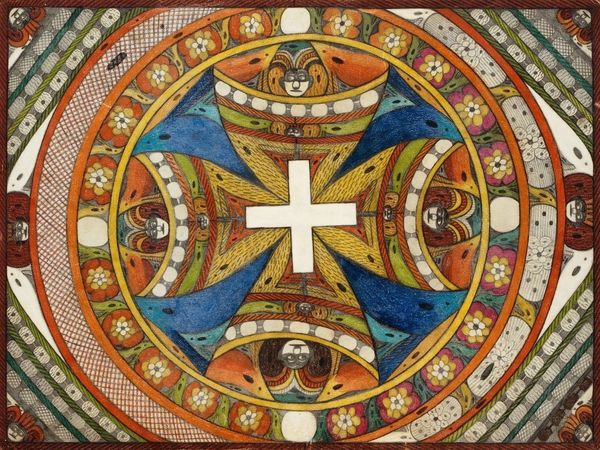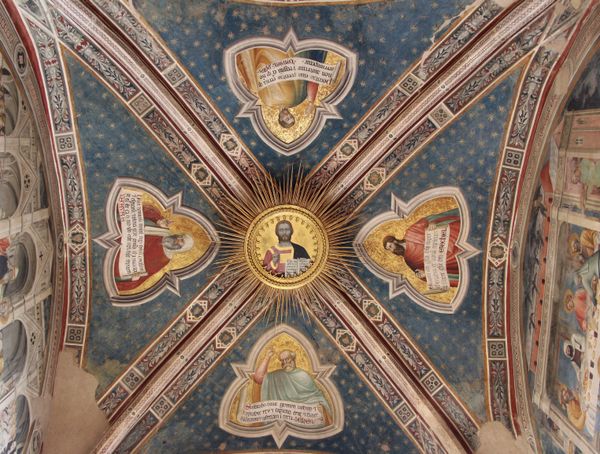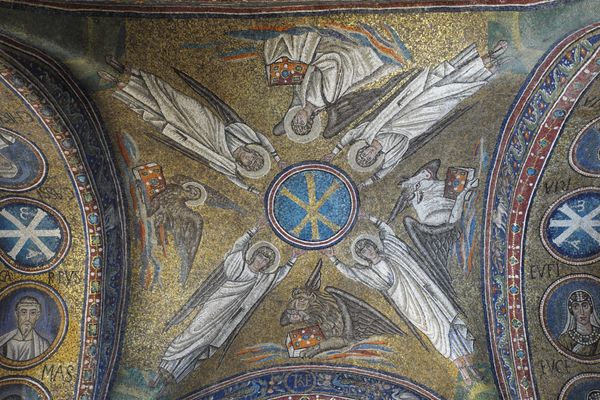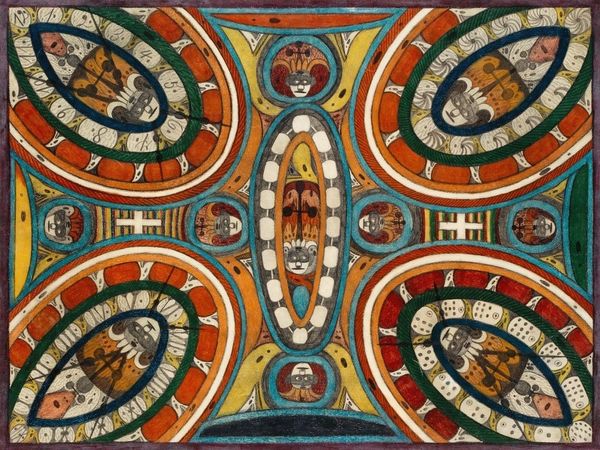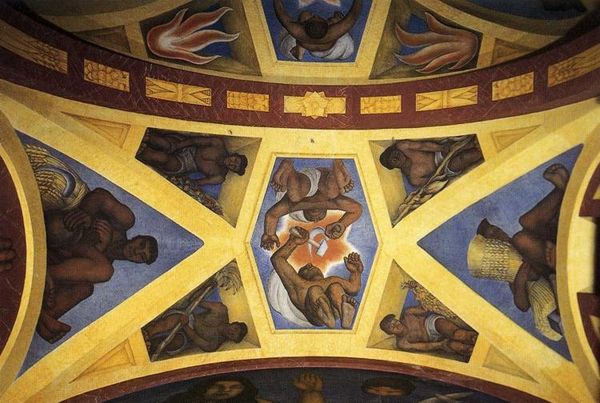
painting, fresco
#
portrait
#
medieval
#
allegory
#
narrative-art
#
painting
#
holy-places
#
figuration
#
form
#
fresco
#
christianity
#
line
#
history-painting
#
academic-art
#
italian-renaissance
Copyright: Public domain
Curator: What catches my eye is the division, almost like stained glass, in Benozzo Gozzoli's "The Four Evangelists." Painted as a fresco around 1465, it is an expansive decoration across a vaulted ceiling. My immediate impression is of floating figures bathed in vibrant blues and reds, anchored by these architectural bands. It feels at once heavenly and rigorously designed. Editor: Heavenly, certainly. The first thing that grabs me is the materiality of the whole thing. To be able to scale an image onto the ceiling requires labor: ladders, scaffolding, underdrawings. But also to work fast while the intonaco—the top layer of plaster—is still wet and receptive, demanding an immediate confidence. Curator: Absolutely, and each evangelist, identified with their traditional symbolic animal—the man for Matthew, the lion for Mark, the ox for Luke, and the eagle for John—embodies profound meanings. The animal is an immediate clue that taps into a long tradition of biblical interpretation and, furthermore, cosmic significance. Editor: I'm fascinated by the actual paint used: How coarsely ground were these pigments? And where were they sourced? Looking closer, the brushstrokes tell a story of fast application, revealing a practical and grounded technique behind these divinely inspired figures. These are colors born from the earth itself. Curator: These figures connect the heavens with the Earth, divine inspiration channeled into material form, echoing in these visual traditions. What I also admire is how Gozzoli integrated the imagery with the architecture; notice how the segments are placed on the ceiling so the observer could experience it in space and time. Editor: True. Consider the practical implications of painting on a curved surface—a constant negotiation between artistic vision and the physical reality of the chapel itself. It prompts reflection on artistic intentions—divine inspirations delivered from an earthly origin. It adds so much complexity to even the simplest shapes! Curator: Yes! From cultural symbolism to material applications, there is so much to admire about the complex tapestry that these artists could imagine and render through skill and deep knowledge. Editor: Indeed. The next time I look at this piece, I'll see all of these: it's material creation and symbolic transmission all bound to the earthly plane in dust and vibrant hues.
Comments
No comments
Be the first to comment and join the conversation on the ultimate creative platform.
